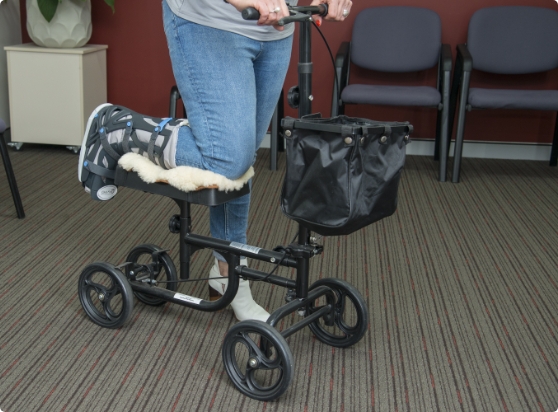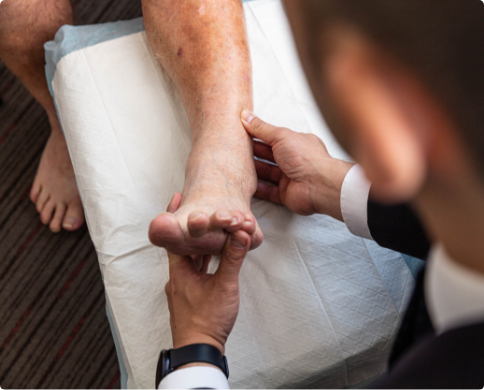Tendon Issues Treatments
What are the non-operative treatment options for Achilles tendonitis?
The first line of treatment of Achilles tendonitis is always non-operative management. Non operative management consists of activity modifications, shoe wear modifications with shoe lifts, anti-inflammatory medications, and physiotherapy. Physiotherapy is the mainstay on non-operative management and will focus on eccentric training and possibly shockwave therapy.
Non insertional Achilles tendonitis responds better to non-operative management with a 65-90% success rate while insertional Achilles tendonitis has a success rate of approximately 50%.

What are the operative options available for Achilles tendonitis?
Operative intervention for Achilles tendonitis is only considered if the patient has failed all attempts at non-operative management.
Non insertional Achilles tendonitis is treated with an open excision of the degenerative tendon, tubularization of the tendon and injection of platelet derived growth factor.
Insertional Achilles tendonitis is treated with an open excision and detachment of the degenerative Achilles tendon, removal of the bone spur on the heel and reattachment of the tendon.
Book an Appointment Today!

What can I expect after Achilles tendonitis surgery?
Expect to stay in hospital for 1-2 nights for observation and while the physiotherapists help you with swelling management and teach you how to be safe non weight bearing with crutches. Blood thinners are commenced immediately and continued for the duration of treatment.
You will initially be placed in a plaster with your foot pointed to the ground for 2 weeks. At your first post-operative visit at 2 weeks you will be changed into a boot and commenced on Dr. Chow’s functional Achilles tendon protocol. Expect to be in a boot for up to 10 weeks before being transitioned to a normal shoe. Long distance walking is usually achieved at around 6 months and up to 12 months is often required for full recovery.
Potential complications of Achilles tendonitis surgery
All surgical procedures involve inherent risk of complications. However, these risks are generally uncommon and quite infrequent. These include anesthetic complications, wound infections, deep infections, nerve injuries, tendon injuries, bleeding, failure of tendon to heal to the bone, ongoing pain, stiffness, chronic regional pain syndrome, blood clots, failure of the procedure to relieve all of the presenting symptoms and recurrence of the pain or heel spur.
Patients can minimize the risk of complications by carefully following post-operative instructions.
